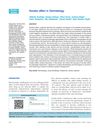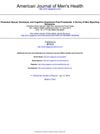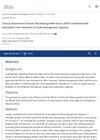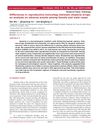Guidelines on the Use of Finasteride in Androgenetic Alopecia
January 2016
in “
Indian Journal of Dermatology, Venereology and Leprology
”

TLDR Taking 1 mg of finasteride daily can increase hair count and improve hair appearance, but it may have side effects on sexual function and a potential risk of prostate cancer. It may not be effective for postmenopausal women unless taken in higher doses.
The document from 7 years ago reviewed the use of finasteride in treating androgenetic alopecia, examining 262 studies, 12 of which met the inclusion criteria. The evidence indicated that a daily oral dose of 1 mg of finasteride effectively increased hair count and improved hair appearance, especially when started early and used long-term for up to 10 years. It was more effective when combined with other drugs like minoxidil. However, concerns about side effects, particularly on sexual function, were raised. Some studies suggested these side effects were not significant and returned to normal upon discontinuation of the drug, while others suggested they may not be entirely reversible. The review also discussed a potential increased risk of high-grade prostate cancer with finasteride use, although long-term follow-up showed no significant difference in survival rates.
In terms of female pattern hair loss, a study involving 137 postmenopausal women found no significant difference in hair count between the finasteride and placebo groups after one year. However, other studies suggested that higher doses of 2.5 mg per day or more might be effective for treating patterned hair loss in postmenopausal women. The document recommended proper patient counseling regarding finasteride's efficacy and potential side effects, including its potential teratogenicity.






